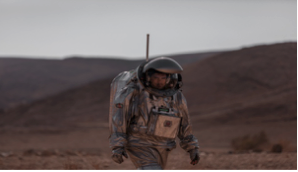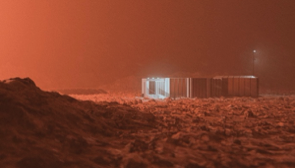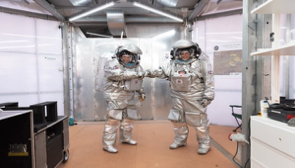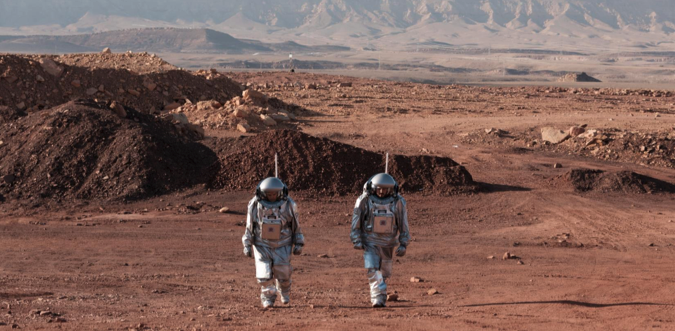Overview of AMADE-20 Mars Analog Mission and Insights from AMADEE-24
- Austrian Space Forum (Österreichisches Weltraum Forum-OeWF), Austria
AMADEE-20 is the latest Mars Analog Mission of the Austrian Space Forum (OeWF), conducted in Israel in the Negev Desert and hosted by the Israel Space Agency.
The 40 km long and 11 km wide Ramon Crater is an erosive crater unveiling a geological window of different sedimentary and volcanic processes with formations of sandstone, shales at the crater base, and mostly limestone and dolomite by the crater wall and represents sediments of the Thetis paleo-ocean with several volcanic and plutonic episodes including paleo-volcanos and granites. This nascency is accompanied by a semi-arid climate with dry summer (June – September), mild winter (December- February), and sparse vegetation only growing on the high rim hillslope and wadis (dry streams). Therefore, the Ramon Crater (Maktesh Ramon) presents remarkable geologic and geomorphological structures comparable to the Red Planet. Hence, beyond traditional analog mission applications, such as equipment behavior and evolving the know-how on crew management, we had the opportunity to develop research methods to catalyse the visibility of planetary explorations and develop structures for life-detection systematics and geoscientific techniques.
Two main segments of the mission; the mission support center (MSC)- on Earth time- and the field crew- on Mars time- were emulating a planetary surface mission by keeping a 20min time delay (10 min per signal direction) to account for the average signal travel time between Earth and Mars. The MSC was staffed by a Flight Director, Biomedical Engineers, Earth Communicators, CONTACTS,Records Manager, Procedure monitoring, Human Factors, Remote Science Support, Flightplan Team, Ground Support & Security, Science Data Officer, and Media Communication. The field crew was divided into two elements; I) the flight crew (6 AAs) with the analog astronauts, who conducted the experiments, and ii) the on-site support team (12 crew members) who provided support without interfering with the experiments or interacting directly with the AAs. Thereby, also maintaining a secured parameter and safety infrastructure for the simulation All major workflows of the mission were defined via the OeWF Standard Operating Procedures.

The flight crew habitat was provided by the Israel Space Agency and D-Mars, based upon the foldable D-Mars station design, complemented with a new module comprised of a Command module, Engineering/Science compartment, Crew quarters, Storage space, Mess and Hygiene module.

To provide a realistic platform for the experiments, isolation protocols were in place ensured. In total, 25 experiments were conducted from the fields such as engineering and robotics, human-robot interactions, health sciences, life sciences and geosciences. Outcomes of these experiments and the AMADEE-20 mission will be presented. This included an innovative science strategy, the exploration cascade which is an algorithm providing an efficient deployment sequence of scientific investigations (Groemer and Ozdemir, 2020).

In the meantime, the preparations for the 14th analog mission of the OeWF, AMADEE-24 have started. With a comparable mission architecture as described above, we will be soliciting proposals for research experiments, to be selected peer-review process. These missions are a formidable platform for testing technologies, instruments and science workflows as well as it is a research opportunity for human factor studies.

REFERENCES:
Groemer G. and Ozdemir S. 2020. Planetary Analog Field Operations as a Learning Tool. Front. Astron. Space Sci. DOI: https://doi.org/10.3389/fspas.2020.00032
How to cite: Özdemir, S., Grömer, G., and Gruber, S.: Overview of AMADE-20 Mars Analog Mission and Insights from AMADEE-24, Europlanet Science Congress 2022, Granada, Spain, 18–23 Sep 2022, EPSC2022-1247, https://doi.org/10.5194/epsc2022-1247, 2022.

